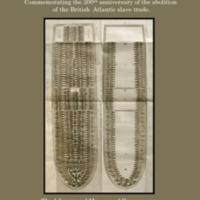
Squaring the Triangle: Freemasonry and Anti-Slavery
The exhibition at the Library and Museum of Freemasonry to mark the bicentenary arose from a project to catalogue their historical collections relating to Masonic history in the West Indies and America between 1760 and 1900. This period covers the establishment of African Lodge, the first Masonic lodge for African-Americans. Its first Master was Prince Hall, a freed slave and respected Boston resident who had fought for the British. From 1847 his name has been synonymous with Prince Hall Masonry, the first major Black Masonic organisation in the world. The library holds eleven letters written by or for Prince Hall. The exhibition and cataloguing of this correspondence enabled the library to start compiling details of early Black and Asian Freemasons in its collections. The exhibition also looked at members in the 18th and 19th century who were both slave owners and abolitionists, and the establishment of lodges in the Caribbean.
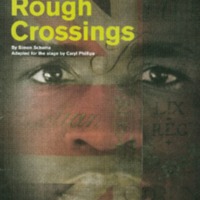
Rough Crossings
Historian Simon Schama's true story of a plantation slave (Thomas Peters) and a British naval officer (John Clarkson) and their search for freedom at the time of the American War of Independence. Schama's account was adapted for the stage by Caryl Phillips, directed by Rupert Goold and produced by the Headlong Theatre Company. It explores ideas of racial identity, home and freedom, as former slaves who fought for the British army are led across the Atlantic to the newly-created province of Sierra Leone. The play toured West Yorkshire Playhouse, Birmingham Repertory Theatre, Liverpool Everyman and Lyric Hammersmith.
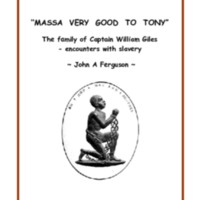
“Massa Very Good to Tony” The family of Captain William Giles - encounters with slavery
A lecture given to the Cumbria Family History Society Annual Conference in November 2007 was produced in booklet form and deposited in the Cumbria Record Office at Carlisle. To mark the bicentenary, John A. Ferguson researched the story of a former slave from Jamaica who lived in Cumberland. Captain William Giles of the British Army served in the West Indies in the 1780s, settling with his family in Jamaica. When the family returned to England, they brought with them James Anthony, known as "Tony", their former domestic slave. Tony was later servant to several other families in Carlisle, and is buried in St Mary's churchyard.
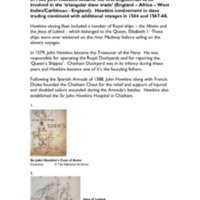
Freedom 1807: The Chatham Dockyard Story
The Historic Dockyard Chatham opened a new exhibition in 2007 to look at the history of Chatham in the context of the transatlantic slave trade. The exhibition examined dockyard ‘founder’ John Hawkins - the leader of the first English expedition to transport West African people to the Americas - the work of Chatham-built ships in policing the slave trade post-abolition, and the hidden history of people from ethnic minorities who served in the Royal Navy or worked in the naval dockyard, from the 18th century to the post-Second World War period. The exhibition also looked at Chatham's links to Indian shipbuilding. HMS Gannet (1878), preserved alongside two other historic warships at The Historic Dockyard, is the only surviving British warship to have taken part in the suppression of the slave trade off the coast Africa during the 19th century. Between 1885 and 1888 Gannet undertook anti-slavery patrols in the Red Sea, intercepting Arab slave traders operating off the East Coast of Africa, around the Gulf and the Indian Ocean.
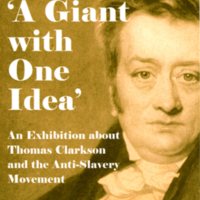
'A Giant with One Idea': An Exhibition about Thomas Clarkson and the Anti-Slavery Movement
A Giant with One Idea told the story of the anti-slavery campaign through the personal narrative of the abolitionist Thomas Clarkson, who was born and raised in Wisbech. The exhibition included an overview of the transatlantic slave trade, major campaigners in the abolition movement, the antislavery campaign after 1807, and details of Clarkson’s travelling chest, which he used to help illustrate the cruelty of the slave trade. The exhibition later travelled to other venues in the area. Accompanying the exhibition was a handling box based on Clarkson’s chest available for schools and community groups, as well as a children’s activity booklet led by the character of Clarkson himself. The museum also supported the publication of a number of books telling the life stories of Thomas Clarkson, and his less well known brother, the naval officer John Clarkson.